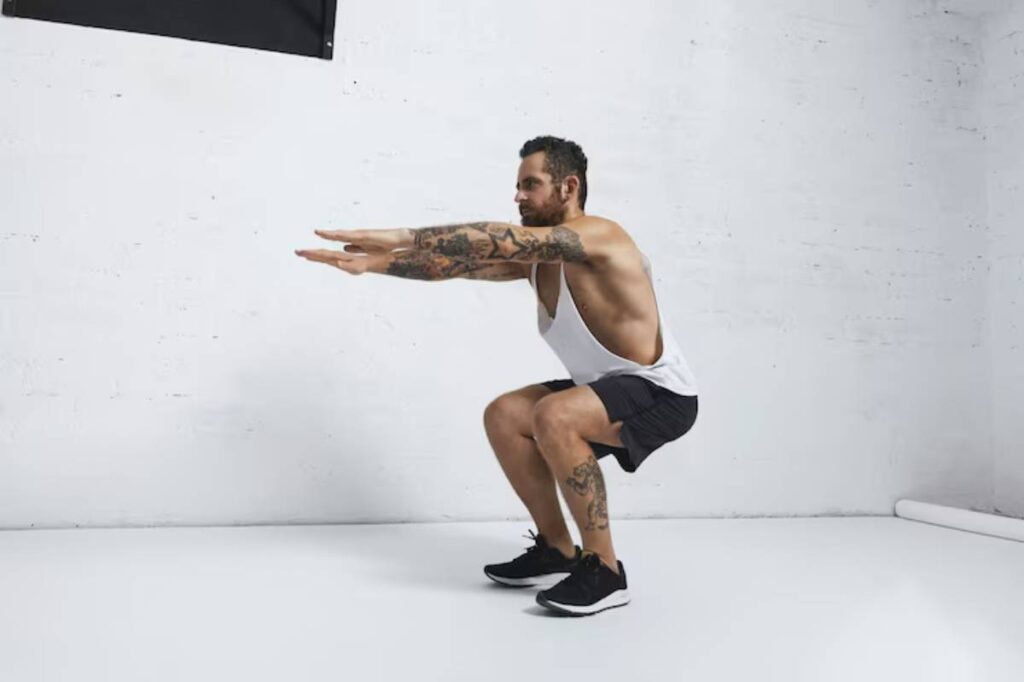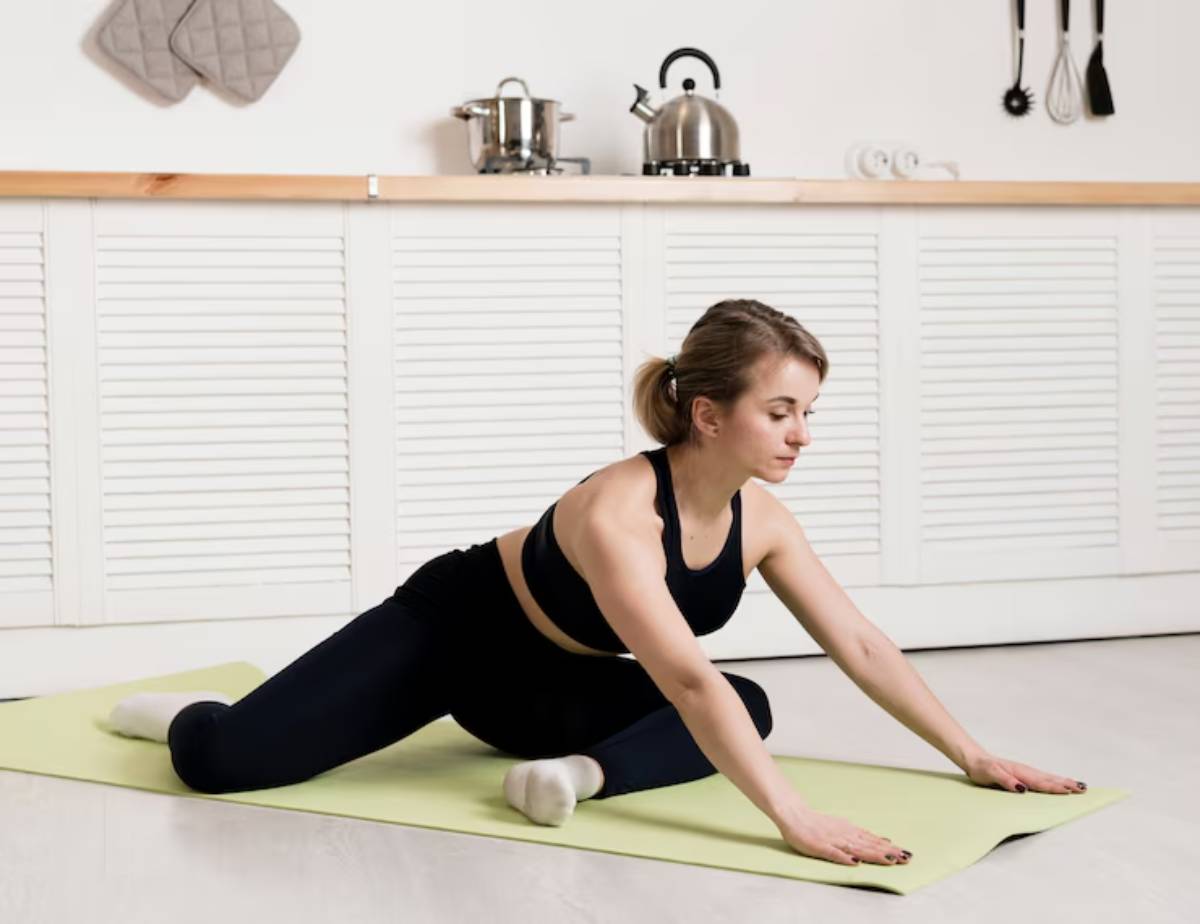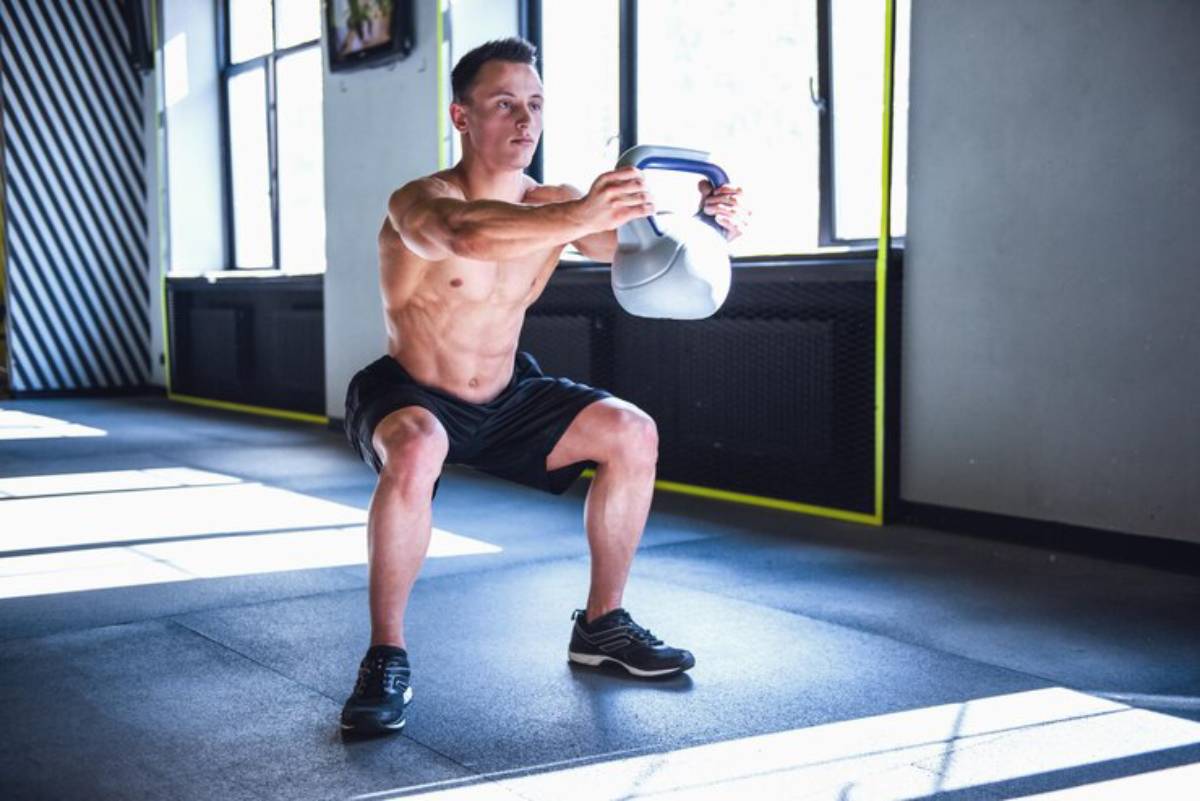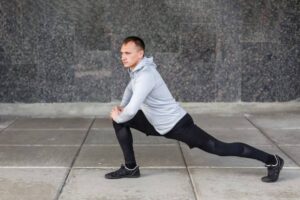The Fitness Blog

Hip Mobility Sequences for Better Squat Depth
If you’ve ever struggled to hit proper depth in your squat without feeling like you’re going to topple backwards—or if your knees cave in, heels lift, or lower back rounds—there’s a good chance your hips are holding you back.
Hip mobility for squats isn’t just about stretching randomly before a leg session. It’s a deliberate, focused effort to restore and enhance the range of motion in the joints that do most of the heavy lifting.
Whether you’re a powerlifter chasing depth, a CrossFitter refining technique, or simply trying to make squats feel more natural, improving your squat flexibility can be the game-changer. In this blog, we’ll break down why hip mobility matters, which hip opening exercises are most effective, and how to build them into a practical, repeatable routine.
Let’s dive into the movements that help you squat deeper, safer, and stronger.
Why Hip Mobility Matters for Squat Performance
Squatting Is a Full-Body Movement—but Hips Lead the Way
While squats recruit multiple joints and muscle groups, your hips are the true pivot point.
Limited hip mobility restricts:
- Depth (how low you can go)
- Stability at the bottom
- Alignment of knees and feet
- Load transfer through the glutes and hamstrings
If your hips can’t open properly, your body compensates elsewhere—usually the lower back or knees. This not only limits performance but also increases injury risk.
Research published in the Journal of Strength and Conditioning Research confirms that restricted hip joint mobility directly correlates with altered squat mechanics and joint stress. In short, tight hips make for dodgy squats.
Common Signs of Poor Hip Mobility
Is Your Body Trying to Tell You Something?
Not sure if your hips are holding you back?
Look out for these red flags:
- You can’t break parallel without your heels lifting
- Your knees collapse inward (valgus) on descent
- You feel a pinching or tightness in the front of the hip
- Your torso leans too far forward
- Your lower back rounds or tucks at the bottom (butt wink)
If any of this sounds familiar, focusing on hip mobility for squats is no longer optional—it’s essential.
Key Muscles and Movements Involved in Squat Depth
Know What You’re Working With
To squat well, you need mobility in the following key areas:
- Hip flexors: Tight hip flexors can limit your ability to hinge properly.
- Adductors: These inner thigh muscles affect your ability to open the hips wide.
- Glutes: Weak or underactive glutes reduce joint control and depth.
- Hamstrings: While not usually the limiting factor, they can affect pelvic tilt.
- Hip capsule: The actual joint capsule requires movement in multiple directions—rotation, flexion, and extension.
The trick is not just to stretch these muscles passively, but to mobilise them actively through movement.

Effective Hip Opening Exercises to Improve Squat Depth
Move with Intention, Not Just Repetition
Let’s break down a hip mobility sequence that can be used pre-lift or on active recovery days.
1. 90/90 Hip Rotations
Why: Improves internal and external rotation—key for squat stability.
How to do it: Sit with both knees bent at 90 degrees, one in front, one to the side. Rotate between positions slowly, using your core for control.
2. Spiderman Lunge with Reach
Why: Opens up the hip flexors, adductors, and thoracic spine.
How to do it: Step one leg forward into a deep lunge. Lower both hands inside the lead foot, then rotate the same-side arm towards the ceiling.
3. Prying Goblet Squat
Why: Mimics the squat pattern while encouraging hip opening.
How to do it: Hold a light kettlebell or dumbbell at chest height. Sink into a squat and use your elbows to gently push your knees apart.
4. Kneeling Hip Flexor Stretch with Glute Engagement
Why: Lengthens tight hip flexors while training the glutes to stabilise.
How to do it: From a half-kneeling position, tuck your pelvis slightly and squeeze the glute on the back leg. Gently lean forward while keeping the glute engaged.
5. Wall-Facing Squat
Why: Trains the upright torso and deep hip flexion.
How to do it: Stand close to a wall with arms overhead. Slowly squat down, keeping your chest tall and not touching the wall.

Structuring a Hip Mobility Sequence
When and How to Fit It In
You don’t need to spend hours. Just 10–15 minutes, 3–4 times per week, can significantly boost squat depth and control.
Pre-Workout:
Use dynamic versions—Spiderman lunge, 90/90 transitions, prying squats.
Post-Workout:
Hold stretches longer and incorporate breathwork. This helps downregulate the nervous system and extend range over time.
Tip: For enhanced recovery, consider how to pair breathwork with stretching to ease into deeper positions without forcing.
How to Track Mobility Progress
Improvements That Show Up Under the Bar
You’ll know your hip mobility is improving when:
- You can break parallel more easily
- Your knees stay aligned with your feet
- You feel more upright in the hole
- There’s less tightness post-session
- You recover faster between squat days
You might even find that other lifts improve, too. Better hip positioning carries over to deadlifts, lunges, and cleans.
If you’re integrating mobility as part of a full-body plan, you’ll benefit from knowing how to integrate recovery into your weekly routine without sacrificing volume or progress.
The Psychology of Deeper Squats
It’s Not Just About the Movement
Mobility work also changes your relationship with your body. When you unlock hips that have been stiff for years, squats stop being something to dread and start becoming something to master.
You’ll likely find:
- More confidence in your technique
- Less frustration during warm-ups
- Greater consistency in training
- Fewer tweaks or twinges mid-set
Mobility is empowering. It gives you ownership of your squat, rather than relying on brute force or compensations.
Mobility Myths to Ditch Now
Don’t Fall for These Common Mistakes
“Stretching before lifting makes you weaker.”
Static stretching might, but mobility is dynamic. Controlled movement enhances performance.
“I don’t have time for mobility.”
Even 5 minutes of hip-focused movement can pay off in better lifts and fewer injuries.
“If I’m not sore, I don’t need to stretch.”
Mobility isn’t a reaction. It’s a proactive tool for performance and health.
Final Thoughts: Squat Deep. Squat Smart.
Improving hip mobility for squats isn’t about ticking a warm-up box—it’s about unlocking your full potential under the bar. If you’re constantly chasing depth, battling tightness, or feeling restricted in your lower body, the solution isn’t always more squats—it might just be smarter movement prep.
With the right hip opening exercises, a consistent routine, and a bit of patience, you can improve your squat flexibility, reduce your injury risk, and squat with more control, confidence, and strength.
So don’t wait for the next niggle or plateau. Start building mobility into your plan now—and feel the difference in every rep that follows.
Want to squat deeper with less pain and better form? Try incorporating 10 minutes of targeted hip mobility into your next lower-body day—you might be surprised how fast the benefits show up.









